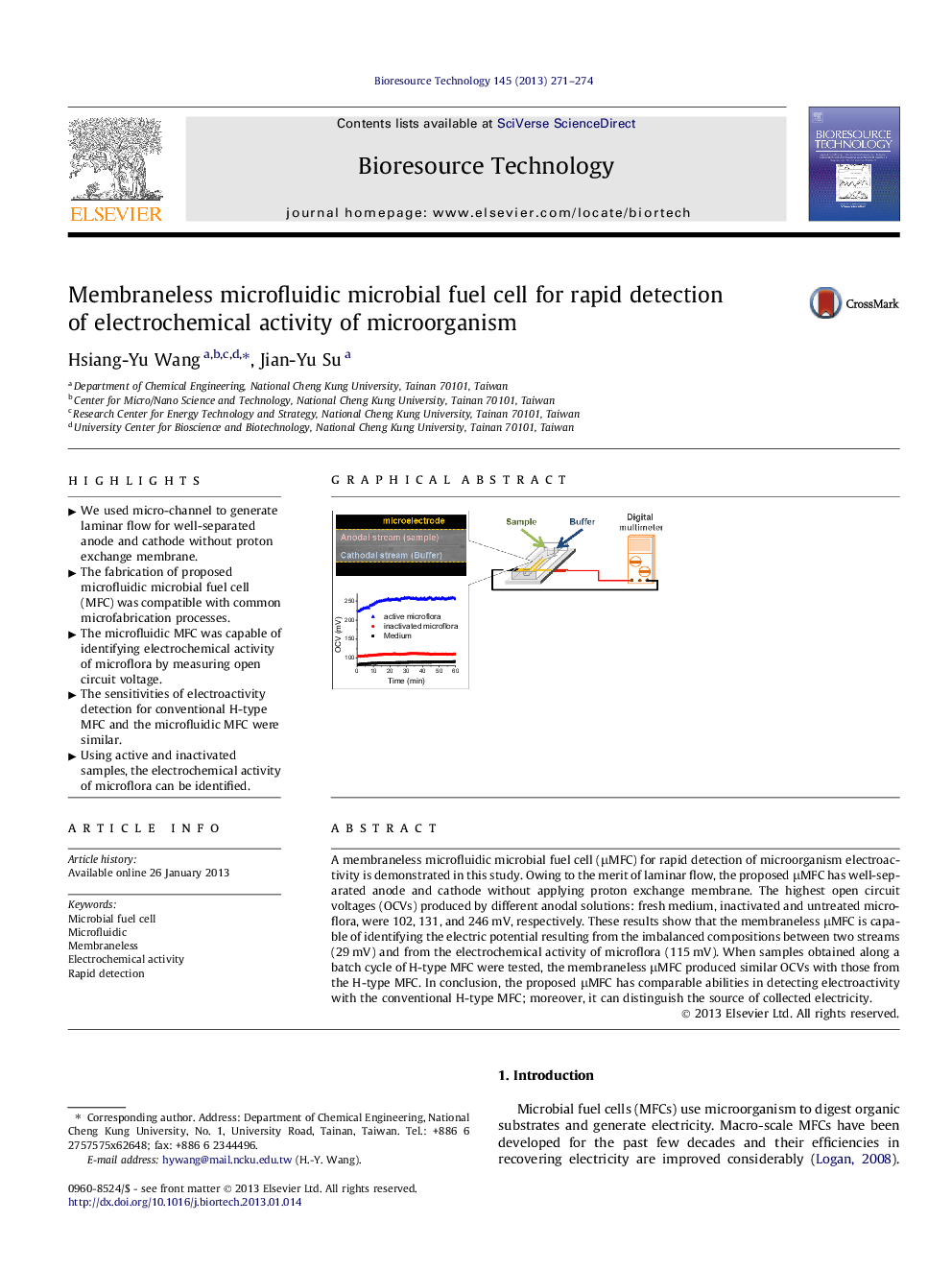| Article ID | Journal | Published Year | Pages | File Type |
|---|---|---|---|---|
| 681059 | Bioresource Technology | 2013 | 4 Pages |
A membraneless microfluidic microbial fuel cell (μMFC) for rapid detection of microorganism electroactivity is demonstrated in this study. Owing to the merit of laminar flow, the proposed μMFC has well-separated anode and cathode without applying proton exchange membrane. The highest open circuit voltages (OCVs) produced by different anodal solutions: fresh medium, inactivated and untreated microflora, were 102, 131, and 246 mV, respectively. These results show that the membraneless μMFC is capable of identifying the electric potential resulting from the imbalanced compositions between two streams (29 mV) and from the electrochemical activity of microflora (115 mV). When samples obtained along a batch cycle of H-type MFC were tested, the membraneless μMFC produced similar OCVs with those from the H-type MFC. In conclusion, the proposed μMFC has comparable abilities in detecting electroactivity with the conventional H-type MFC; moreover, it can distinguish the source of collected electricity.
Graphical abstractFigure optionsDownload full-size imageDownload as PowerPoint slideHighlights► We used micro-channel to generate laminar flow for well-separated anode and cathode without proton exchange membrane. ► The fabrication of proposed microfluidic microbial fuel cell (MFC) was compatible with common microfabrication processes. ► The microfluidic MFC was capable of identifying electrochemical activity of microflora by measuring open circuit voltage. ► The sensitivities of electroactivity detection for conventional H-type MFC and the microfluidic MFC were similar. ► Using active and inactivated samples, the electrochemical activity of microflora can be identified.
